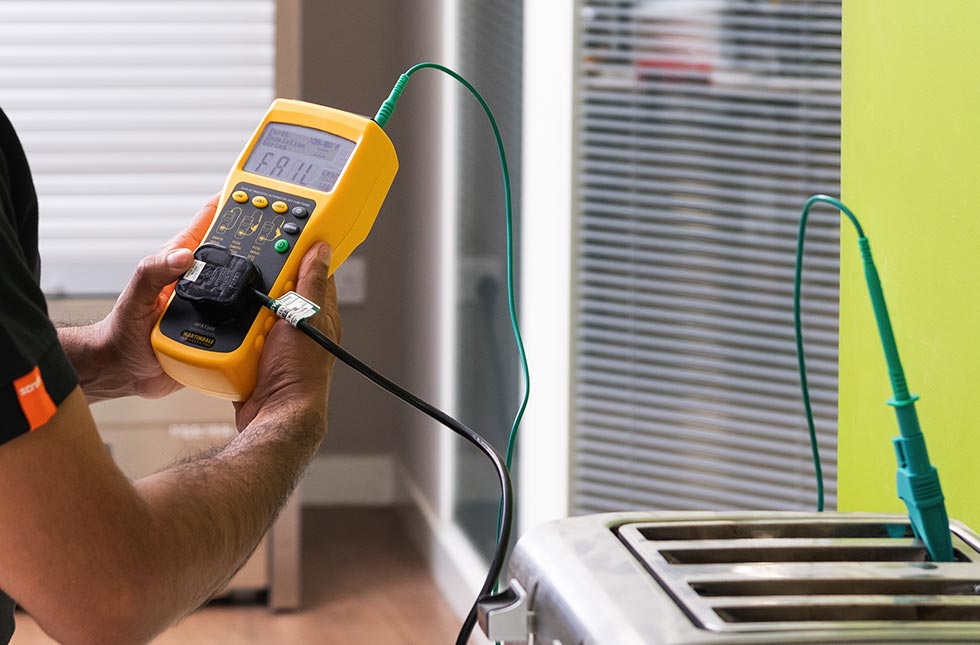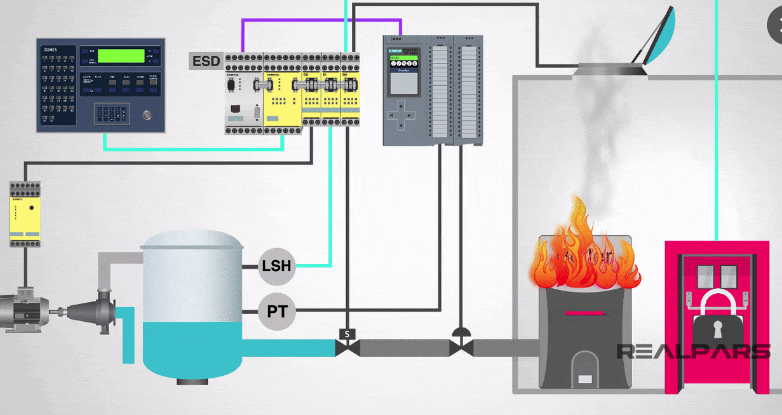
Portable Appliance Testing (PAT) Services in the United Arab Emirates
Electrical Class and Category
• Electrical testing should be carried out in accordance with appliance classes outlined in the IET code of practice.
Class I Appliances
• Typically have three wires, a metal Earth pin, and a fuse.
• Examples include toasters, microwaves, kettles, irons, and refrigerators.
• Basic insulation and earth connection provide two degrees of protection.
• Basic insulation keeps live and neutral wires away from the metal enclosure.
• Earth connection, made with an Earth wire, provides additional protection.
• Insulation Resistance and Earth Continuity PAT tests are required for Class I appliances.
Class II Appliances
• Features plastic cover and two insulation layers.
• Basic insulation provided by plastic connector.
• Backup protection provided by plastic casing.
• Only insulation resistance test required.
Class III Appliances
• Identified by the Class III symbol.
• Used in laptops, mobile phones, and low-energy light bulbs.
• Use an isolating transformer with two coil windings.
• Allows voltage to pass through windings via induction.
• No earth connection required.
• PAT testing unnecessary unless charging leads fall under Class II.
PAT Testing
• PAT testing is a process that checks electrical appliances for safety standards.
• It includes initial visual inspection, insulation, earthing continuity, and contact with exposed metal.
• PAT testing equipment includes standard PASS/FAIL testers for professional use and advanced ones for more data.
Earth Continuity Testing
• Verifies the connectivity between exposed metal parts and the protective earth pin in a class 1 appliance.
• Insulation testing involves connecting the tested appliance with the PAT.
• Insufficient insulation between live parts and earth results in a current flowing from the insulation to the PAT via the protective earth conductor.
PAT Testing Equipment
• Basic PASS/FAIL kits are easy to use and inexpensive.
• Mains-powered testers require connection to an electrical supply.
• Self-contained battery versions are ideal for large workplaces.
Advanced PAT Testing Kits
• Offer various functionality such as portable RCD lead testing, adjustable PASS test limits, substitute and mains powered leakage testing, fuse testing, and lead polarity testing.
Medical Safety Testers
• Designed for use with medical safety equipment.
• Pass/Fail PAT testers can be used with class 1 and class 2 equipment.
Choosing the Right PAT Tester
•There are entry-level, mid-level, non-downloadable, robust/dual-voltage, downloadable, high-level, advanced PAT solutions, and advanced testing apps.
• PAT testing is crucial for traceability and can be done manually, using a phone app, or downloaded.
• Various types of PAT testers are available, including manual, basic, advanced, and downloadable options.
• Consider using a dedicated PAT tester to save on outsourcing.
• Recording test results is essential for traceability and efficiency.
Advanced PAT test
Visual Inspection Test for Appliances
• Check for cable condition: no cuts, cracks, or damage to outer insulation layer.
• Check plug and cable: secure attachment, no overheating, correct fuse value.
• Ensure mains or control switches switch on and off.
• Check sockets for overheating or physical damage.
Earth Bond Test
• Checks resistance between appliance cable plug earth pin and exposed metalwork.
• Applicable to Class I appliances.
• Two current ranges: 200 mA (DE) or 25 A (UK, NL, AU).
• Zero the test lead for correct results.
• Use lower current 200 mA for certain appliances.
• Connect appliance and earth bond test lead.
• Use probe for bond test >10 A; rated for 10 A only.
• Flex the flexible cord to identify broken conductors or poor quality joints.
• Continuous high current bond test periodically drops back to 200 mA to prevent overheating.
Insulation Test (RISO)
•Prevents electrical shock, fire, or personal injury.
• Test voltage can be 500 V dc.
• Do not touch the appliance during the test.
• Ensure test is completed before disconnecting appliance leads.
• Do not perform the test on appliances that failed the bond test or visual inspection test.
• Test can be done with 250 V or 500 V.
• Checks resistance between earth pin of appliance cable plug (Class I) or test probe applied to the appliance (Class II) and Live and Neutral pins of the appliance.
• Insulation test inhibited if terminal voltage >30 Vrms is detected before test initiation.
• Alternative tests like touch current, leakage current, or substitute leakage current test may be conducted for certain appliances.
Substitute Leakage Current Test (ISL)
• Measures leakage current between earth pin of appliance cable plug (Class I) or test probe attached to appliance under test (Class II).
• Connects appliance and test probe as indicated on display.
• No test probe required for Class I appliances.
• For Class II appliances, apply probe to exposed metalwork.
• Tests for all exposed metal parts on the appliance.
Touch Current Test (ITC)
• The test requires a thorough visual inspection, earthing test, and insulation test before proceeding.
• The appliance must be tested in both polarities of mains supply for non-polarized sockets/plugs.
• The test is live and requires the appliance to be energized at mains voltage.
• The test includes a fuse and L-N loop pre-test and a leakage current measurement with ~2 kW resistance.
• The test probe is applied to any exposed conductive part on Class II appliances and any exposed conductive parts not connected to earth on Class I appliances.
• Live tests must be accepted with a '¹', and the tester will prompt when a push is made.
• The pre-test verifies fuse and lead continuity with a low voltage signal across the appliance phase and neutral pins.
• If the pre-test fails, the display shows a self-explanatory message.
• Low power appliances, appliances with electronically controlled on/off switches, or inductance may fail this test.
Load/Leakage Current (IPE) Test
• The test requires a thorough visual inspection, earthing test, and insulation test.
• The appliance must be tested in both polarities of mains supply for non-polarized sockets/plugs.
• The test is live and requires the appliance to be energized at mains voltage.
• The test includes a fuse and L-N loop pre-test, measurements of appliance power consumption and load current, and earth leakage current measurement.
• Live tests must be accepted with a push, and the tester will prompt the user when they push.
• The pre-test verifies fuse and lead continuity with a low voltage signal across the appliance phase and neutral pins.
• If the pre-test fails, the display shows a self-explanatory message.
• Low power appliances, appliances with electronically controlled on/off switches, or inductance may fail this test.
• To test these appliances, push to continue with the test and give a pass assignment to the Fuse/L-N loop Pre-test.
RCD Test
• Measures trip time of general-purpose AC RCD modules with a rated residual operating current of 30 mA.
• Uses a Sinusoidal waveform at 230 V mains.
• Tests not allowed at 110 V mains.
• Can be done manually or with an auto test at 50%, 100%, and 500% of the rated residual current.
• Tests can also be done at 0 ° and 180 ° phase.
• Procedure: Connect RCD module to 230 V test socket, connect output to IEC connector with IEC lead, select "test button" and "RCD", select "auto test" or "manual tests", and push to start test.
IEC Lead Test
• Measures earth bond resistance and insulation.
• Measures live-neutral lead/fuse continuity and polarity
• Shows failed polarity message if swapped polarity condition and continuity failure occur.
• Single test mode, no visual test in Manual mode.
9 Common PAT Testing Errors
• PAT is a crucial tool for safety, but common mistakes can lead to incorrect results.
• Common mistakes include not performing a visual inspection, not performing the tests in the required order, forgetting to switch the appliance on, touching the appliance, only doing one earth bond test, taking an average reading, trying to do an earth bond test on a Class II appliance, only doing one insulation test, not checking the fuse is conducting, failing a function test (powering it up), not testing at the correct voltage, and not calculating the correct pass level.
• PAT tests are necessary for all portable appliances, including those not part of a fixed installation but intended to be connected to a fixed installation or generator.
• Class I equipment relies on basic insulation of live parts to prevent contact with parts that are live under normal conditions.
• Class II equipment relies on either two layers of insulation (double insulation) or insulation equivalent to two layers (reinforced insulation).




